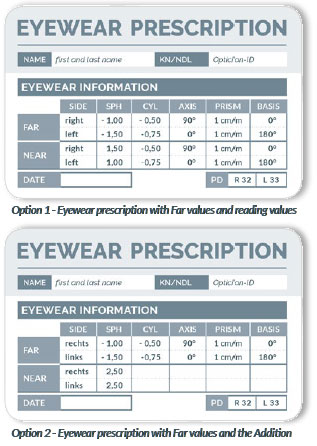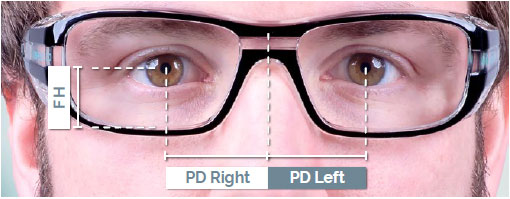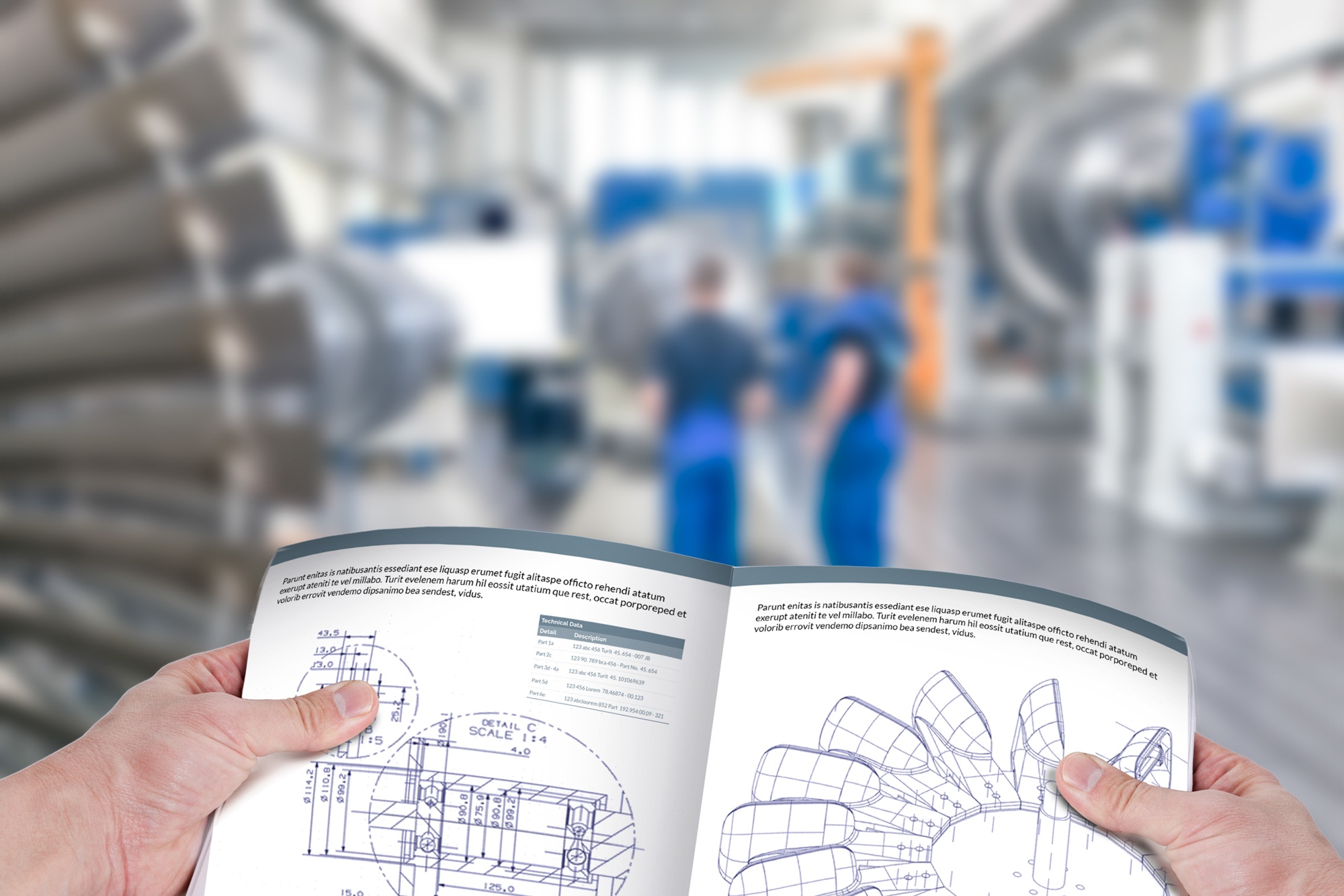Client measurements
Information about the lens values
The lens values are determined by an optician or an eye doctor. In addition, the pupillary distance of the wearer is measured. This measured parameter is documented on an eyewear prescription.
Information included in the eyewear prescription
| Term | Explanation |
|---|---|
| Sph (Sphere) | Proportions of the near-sightedness or far-sightedness in the defective vision |
| Cyl (Cylinder) | Only provided, if there is a corneal curvature |
| Axis | Location of the corneal curvature of the eye | The value of the axis determines the position of the cylinder effect in the lens |
| Prism | A prism correction corrects a heterophoria (misaligned eyes). The value is given in cm/m |
| Basis | Gives the position of the heterophoria |
| Near | Lens value, in order to see nearby objects |
| Far | Lens value, in order to see objects at distance |
| Addition (ADD) | When ordering varifocal lenses, both the ‘Far’ value and the ‘Near’ value must be provided. For purposes of simplification, the ‘Near’ value can also be indicated as Addition (ADD)". (Near value = Far value + Addition) |
Pupil distance (PD)
The pupil distance describes the distance between the centres of the pupils. The individual pupil distance is measured from the centre of the pupils to the nasal root (PD Right + PD Left = PD). As a rule, faces are not symmetric, which can lead to different measurements for the right and left eye.
The eyewear is then manufactured in such a manner that the optical centre of the eyewear lens is directly in front of the pupils. This measurement is especially important, because a deviation from the measured PD can lead to headaches and nausea.
Fitting height (FH)
Because every face has its own unique shape, all eyewear lenses are despoke. To enable accurate manufacture, the pupil distance and the fitting height must be determined in advance. The fitting height is required for varifocal lenses, officelenses, bifocal lenses as well as single vision lenses with high lens values. The proximity height depends on the eyewear frame. It is measured from the bottom, inner frame edge to the centre of the pupil. The proximity height can be adjusted depending on whether varifocal or bifocal lenses are required.
Common vision defects
Defective vision and its consequences
In order for a person to be able to observe an object (image) sharply, the rays of light that travel from an object must be projected onto the retina of the eye in an exact manner. Should this process be hindered as a result of the person’s specific anatomy, it is called defective vision of the eyes.
Near-sightedness (Myopia)
The eyeball is too long or the refractive power of the eye lenses is too high. The image information is not projected sharply on the retina, but in front of it (near-sighted). Objects that are further away appear unclear.
Corneal curvature (Astigmatism)
Compared to the eyes, the cornea is not spherical but oval. As a result, the light is not projected onto the retina correctly. Objects, both near and at distance, are unclear.
Far-sightedness (Hyperopia)
The eyeball is too short or the refractive power of the eye lenses is too low. This means that the image information is not projected sharply on the retina, but behind it (far-sighted). Objects that are close appear unclear.
Age related (Presbyopia)
As we all grow older, the elasticity (refractive power) of the eye lens constantly decreases. The ability of the eyes to see objects that are nearby clearly always leaves much to be desired. In the same way as far-sightedness, the image information is projected sharply not on, but behind the retina. Objects that are nearby therefore appear unclear.







